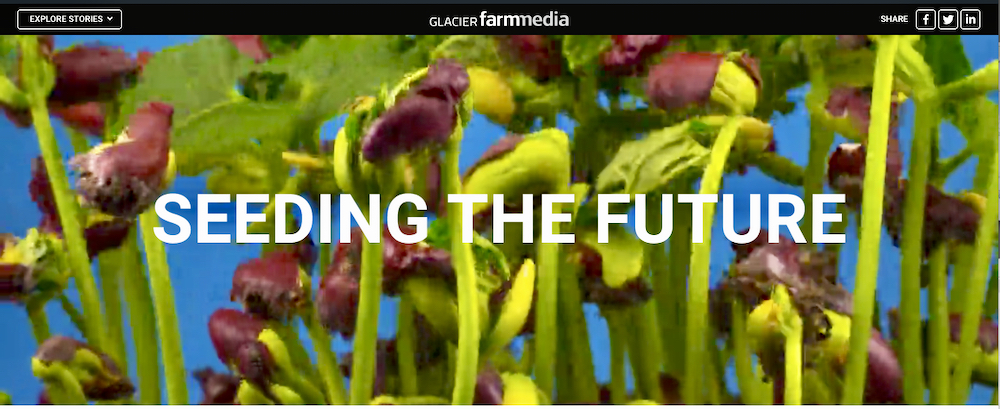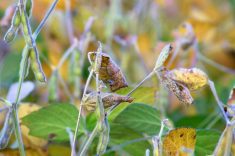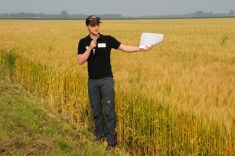Dry conditions did have one silver lining for pulse producers — root rot, aphanomyces and other moisture-driven diseases weren’t prominent this year.
But what infection there was showed that it’s a problem that’s simply receded, not disappeared.
“Disease got pushed down the totem pole a little bit,” said Cassandra Tkachuk, production specialist with Manitoba Pulse and Soybean Growers (MPSG).
They saw less root rot “than ever” this year, she said. Some popped up in low areas and sloughs.
“Where that was the case, there may have been higher disease loads from previous years,” Tkachuk said. “It just kind of shows how resilient those pathogens can be in those lower areas.”
Read Also

Manitoba farmers uneasy on expropriation
Farmland expropriation for Oak Bluff highway project brings process, farmer compensation concerns back to the fore.
One field with root rot was on a very tight rotation including soybeans, she added.
General root rots like fusarium were fairly common in a provincial survey of soybean fields, said provincial plant pathologist David Kaminski. Phytophthora showed up in significant numbers in a few fields, he added.
Kaminski said he suspected this resulted from a combination of a close rotation and some moisture in the spring, which allowed the disease to get started.
To his knowledge, aphanomyces had very little impact on pea crops this year, he said.
Leaf disease pressure was also fairly light, said Kaminski.
In soybeans surveyed, septoria brown spot took over the lead from bacterial blight in incidents spotted, but both were at “almost insignificant” levels due to dry conditions, Kaminski said.
Tkachuk said she saw few incidents of white mould, even in crops like white beans where it might be expected. Some farmers may have been able to save money on fungicide, she said.
Soybean cyst nematode (SCN) was confirmed in another Manitoba RM in July. The parasite-caused disease has been confirmed in the RMs of Thompson, Norfolk-Treherne, Rhineland, Emerson-Franklin and Montcalm, according to MPSG’s website.
“It is a relatively higher population of SCN, so I would just encourage farmers and agronomists to be ready to actively look for it in the coming years,” Tkachuk said.
University of Manitoba researchers confirmed the presence of SCN in Manitoba for the first time in 2019.
SCN is considered one of the most damaging pests to soybean crops in North America. Once above-ground symptoms are noticed, up to 30 per cent yield loss can already be expected.
SCN may be spread by anything that moves soil, like farm equipment, Tkachuk added.
Unsurprisingly, drought conditions were the big limiting factor for soybeans and pulses this year along with grasshoppers.
“I heard that if it was bad, it was really bad,” Tkachuk said.
She’d also seen more reports of lygus bugs this year, including in soybeans and edible beans where they are not usually a big issue.
Nevertheless, initial reports of soybean yields were not as bad as expected, Tkachuk said. The range is from less than 20 bu./ac. up to 40 bu./ac., however she said she’d heard of a 54 bu./ac. yield in the west.
“My biggest takeaway from this year is just how resilient soybean crops can be,” Tkachuk said, adding that, naturally the plants had their limits and areas with heavier soils and more moisture had done better.
This year’s light disease pressure does not necessarily mean next year will be the same.
Tkachuk and Kaminski noted that aphanomyces can survive for several years in the soil.
“They will just go dormant, and that’s why aphanomyces can be such a bugger,” Tkachuk said.
MPSG recommends six to eight years distance between pea crops in fields with known aphanomyces presence, she said. MPSG is working on a long-term crop rotation study to validate that time range.
Whenever you have a tight rotation, you risk survival of the pathogen in the soil and chance of infection, Kaminski said.
Genetic resistance is an important part of disease control. Click the image below to visit our special “Seeding The Future” multimedia feature for more information.



















